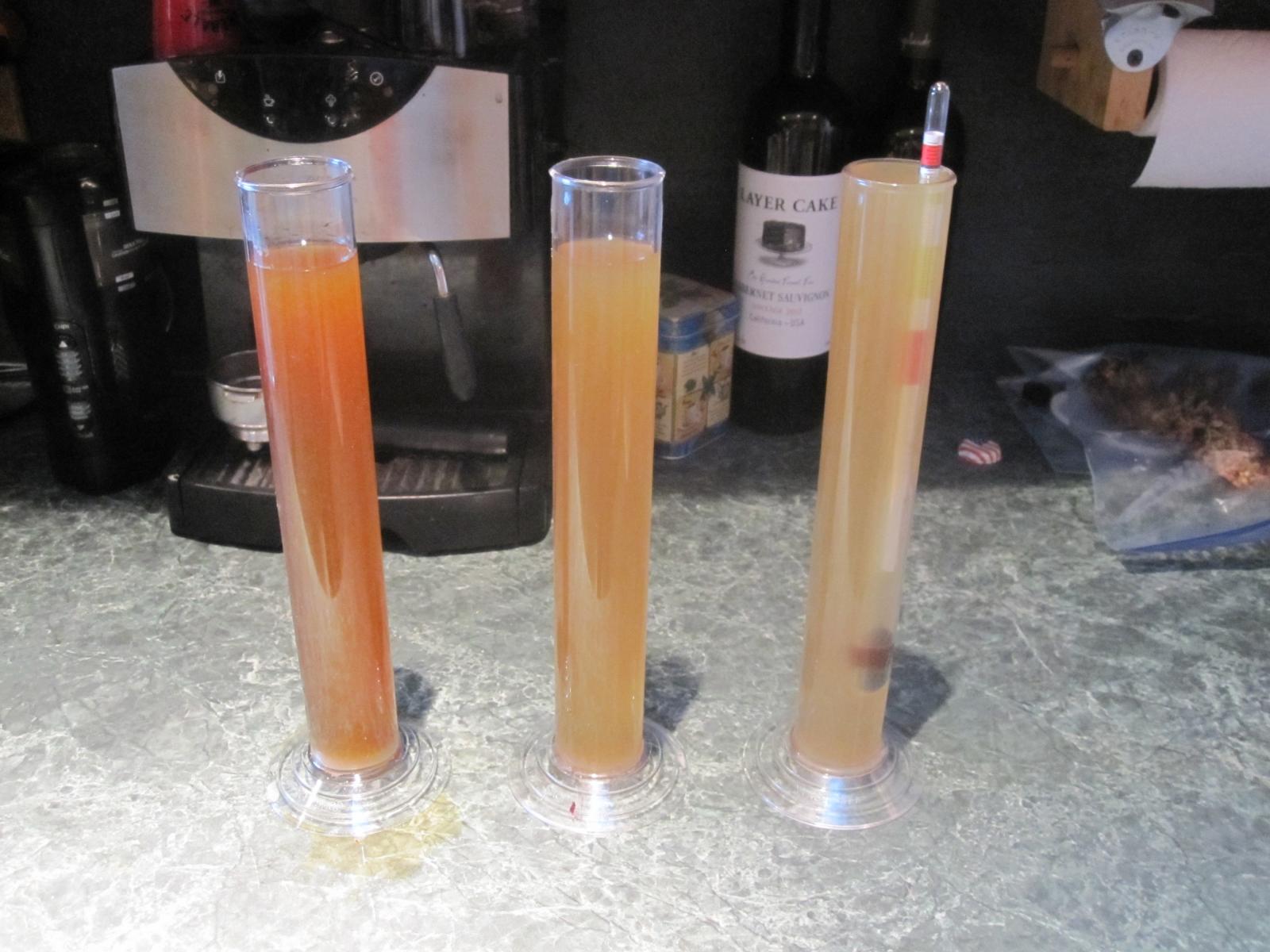GorillaMedic
Member
- Joined
- Apr 20, 2016
- Messages
- 9
- Reaction score
- 14
We had a 54% efficiency our first batch, mostly related (we think) to horrible temperature issues.
This batch, we achieved 66% efficiency with the following setup and process:
1) preheated rectangular cooler fitted with bazooka screen using about a quart of so of 180° water.
2) dumped that water, then added 5.5 gallons of 170° water, then poured in grain bill while stirring.
3) temp was higher than we wanted (160°) so we added a couple quarts of room temp (80°) water. Got a temp of 154°;
3) covered and let sit for about 75 minutes (15 more than our target, related to process issues with getting water heated and into our elevated HLT).
4) Vorlauft, then fly sparged using a DIY sparge arm that seemed to work decently well. Used 7 gallons of water at 170°, took 28 minutes.
5) kettle volume was now about 9 gallons. We put another 3-ish gallons through at 170° until achieving a preboil gallon of about 12 gallons.
A few things I know we need to improve:
- better water heating and moving processes
- maybe stir once or twice during mash
- using a better collection system that catches more of the grain bed than the bazooka.
- actually being able to measure accurate volume in the kettle.
What else can we do? 66% is incredibly frustrating when I'm seeing folks here with coolers and such getting high 70s and above.
This batch, we achieved 66% efficiency with the following setup and process:
1) preheated rectangular cooler fitted with bazooka screen using about a quart of so of 180° water.
2) dumped that water, then added 5.5 gallons of 170° water, then poured in grain bill while stirring.
3) temp was higher than we wanted (160°) so we added a couple quarts of room temp (80°) water. Got a temp of 154°;
3) covered and let sit for about 75 minutes (15 more than our target, related to process issues with getting water heated and into our elevated HLT).
4) Vorlauft, then fly sparged using a DIY sparge arm that seemed to work decently well. Used 7 gallons of water at 170°, took 28 minutes.
5) kettle volume was now about 9 gallons. We put another 3-ish gallons through at 170° until achieving a preboil gallon of about 12 gallons.
A few things I know we need to improve:
- better water heating and moving processes
- maybe stir once or twice during mash
- using a better collection system that catches more of the grain bed than the bazooka.
- actually being able to measure accurate volume in the kettle.
What else can we do? 66% is incredibly frustrating when I'm seeing folks here with coolers and such getting high 70s and above.



















































![Craft A Brew - Safale BE-256 Yeast - Fermentis - Belgian Ale Dry Yeast - For Belgian & Strong Ales - Ingredients for Home Brewing - Beer Making Supplies - [3 Pack]](https://m.media-amazon.com/images/I/51bcKEwQmWL._SL500_.jpg)






